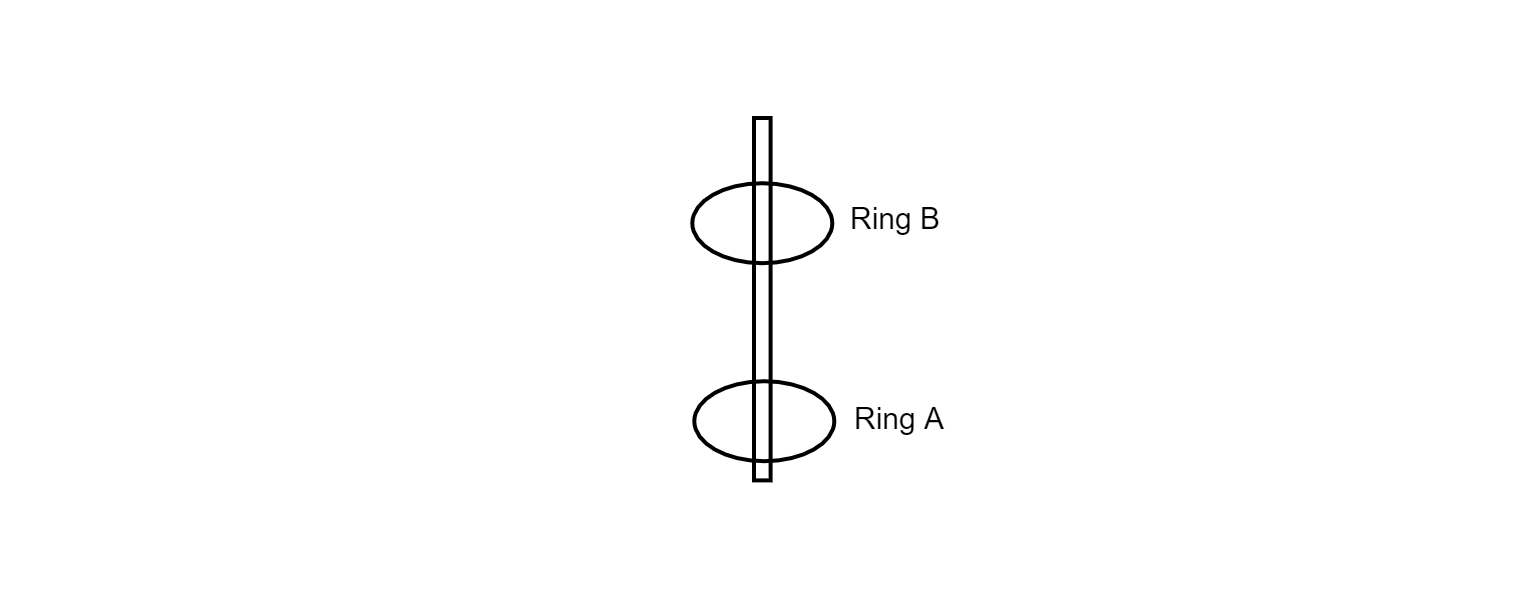
In the given picture the ring $A$ at the bottom is positively charged. Another ring $B$ is brought and placed over it. Ring $B$ hovers at a certain height above $A$. What would be the charge on ring $B$.


Answer
510k+ views
Hint: To solve this question, we need to know the different ways in which charge is induced from a charged body to a neutral body. Charge can be transferred in three ways i.e., friction, conduction and induction. Here that method is used in which charge is transferred without the contact of the charged body with the neutral body.
Complete step by step answer:
Let us first discuss the ways in which charge can be induced to an uncharged object.
Charge transfer by friction: In this method, two uncharged bodies are taken and rubbed together. When they are rubbed together both the bodies acquire opposite charges.
Charge transfer by conduction: In this method when an uncharged conductive body is touched with a charged body, the same charge travels from the charged body to the uncharged body. Thus, in this method there is a movement of charge from one body to another on contact.
Charge transfer by induction: In this method an uncharged body is brought close to the charged body without touching it. The uncharged body acquires an opposite charge as that of the charged body.
In the question it is given that the ring $A$ at the bottom is positively charged and another ring $B$ hovers at a certain height above $A$. Since ring $A$ is charged while ring $B$ is placed at a distance from it, charge transfer by induction will take place and ring $B$ will acquire an opposite charge as that of ring $A$, i.e., it will be negatively charged.
Note: One example of charge transfer by induction is when a metal strip that is negatively charged by rubbing it on animal fur and brought near paper bits, then these paper bits get positively charged and get attracted to the scale and stick to it. Charge transfer by induction takes place without any contact.
Complete step by step answer:
Let us first discuss the ways in which charge can be induced to an uncharged object.
Charge transfer by friction: In this method, two uncharged bodies are taken and rubbed together. When they are rubbed together both the bodies acquire opposite charges.
Charge transfer by conduction: In this method when an uncharged conductive body is touched with a charged body, the same charge travels from the charged body to the uncharged body. Thus, in this method there is a movement of charge from one body to another on contact.
Charge transfer by induction: In this method an uncharged body is brought close to the charged body without touching it. The uncharged body acquires an opposite charge as that of the charged body.
In the question it is given that the ring $A$ at the bottom is positively charged and another ring $B$ hovers at a certain height above $A$. Since ring $A$ is charged while ring $B$ is placed at a distance from it, charge transfer by induction will take place and ring $B$ will acquire an opposite charge as that of ring $A$, i.e., it will be negatively charged.
Note: One example of charge transfer by induction is when a metal strip that is negatively charged by rubbing it on animal fur and brought near paper bits, then these paper bits get positively charged and get attracted to the scale and stick to it. Charge transfer by induction takes place without any contact.
Recently Updated Pages
Two men on either side of the cliff 90m height observe class 10 maths CBSE

What happens to glucose which enters nephron along class 10 biology CBSE

Cutting of the Chinese melon means A The business and class 10 social science CBSE

Write a dialogue with at least ten utterances between class 10 english CBSE

Show an aquatic food chain using the following organisms class 10 biology CBSE

A circle is inscribed in an equilateral triangle and class 10 maths CBSE

Trending doubts
Why is there a time difference of about 5 hours between class 10 social science CBSE

Write a letter to the principal requesting him to grant class 10 english CBSE

What is the median of the first 10 natural numbers class 10 maths CBSE

The Equation xxx + 2 is Satisfied when x is Equal to Class 10 Maths

Which of the following does not have a fundamental class 10 physics CBSE

State and prove converse of BPT Basic Proportionality class 10 maths CBSE




